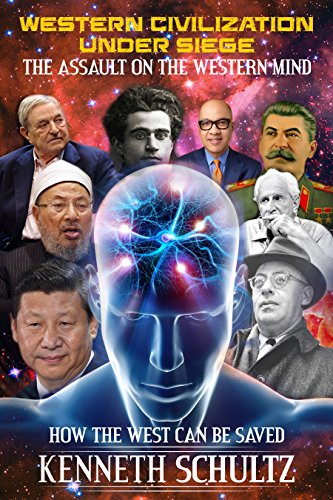 Chapter 5: The Dawn of a New Dark Age
Chapter 5: The Dawn of a New Dark Age
The decline of the West occurred in a series of phases. The first phase is the most significant and overlaps all others.
The Soviet assault on the Western mind
The historical roots of the current malaise lie with the former Soviet Union’s campaign of propaganda and disinformation directed against the West.
The size and success of the Soviet assault on the United States, in particular, rested on the preparatory work of the Communist Party of the USA (CPUSA) going back as far as 1919. The CPUSA was born as the organizational center of a revolutionary movement.
The manifesto of the movement’s 1919 founding convention declared:
Communism does not propose to “capture” the bourgeoisie parliamentary state, but to conquer and destroy it…. It is necessary that the proletariat organize its own state for the coercion and suppression of the bourgeoisie.[i] [Emphasis in the original].
These words are eerily similar to the Muslim Brotherhood’s statement of their “civilization-jihadist process” (see Chapter 11, “The Muslim Invasion of the West,” below):
The Ikhwan [MB members] must understand that their work in America is a kind of grand jihad in eliminating and destroying the Western civilization from within…
Although the CPUSA operated openly and legally, some sections operated clandestinely. From that time on, there was an open CPUSA operating legally while another section stayed underground.
Even though the Communist Party was free to operate openly and legally, it did so while continuing to proclaim revolution and the abolition of constitutional liberties as its mission.
Amazingly, one of the top leaders of the American Communist Party, William Z. Foster, ran for President of the United States in 1924, 1928 and again in 1932 on a ticket openly advocating the overthrow of the country’s constitutional democracy and its replacement by a Soviet-style dictatorship. At a campaign meeting in 1928, he told cheering communists:
When a Communist heads a government in the United States – and that day will come just as surely as the sun rises – that government will not be a capitalistic government but a Soviet government, and behind this government will stand the Red Army to enforce the Dictatorship of the Proletariat.[ii]
This surely is a weakness of Western democracies, where we can allow persons and groups to openly advocate the overthrow of our democratic system of government. As you will see in later chapters, there are still today, groups and individuals openly advocating the overthrow of our system.
Mindful that the communists’ revolutionary threats could one day lead to the banning of the CPUSA, the movement always kept the illegal underground movement operational. Under the orders of the Moscow-directed Communist International (often called as the Comintern), American communists created special sections charged with protecting the party’s internal security, preserving its ability to function in the event of government repression and infiltrating non-communist groups for political purposes.
Most CPUSA members were unaware of the activities of the illegal arm of the party.
From the time the U.S. officially recognized the Soviet Union in 1933, the Soviets targeted the Western world generally, and the United States in particular, with a massive campaign of spying, subversion, disinformation, and infiltration.
Prior to World War II, there were many Western sympathizers of communism. It appealed to intellectuals, journalists, academics and people with utopian ideals, including many in government. As Stalin’s intentions towards the West were not recognized at that time, communist supporters were quite open about their sympathies. They took part in regular meetings and discussion groups, even at high levels in the U.S. government. In time, these people, knowingly or unknowingly, became traitors to their countries.
At first, using the romantic and intellectual allure of such propaganda pieces as The First Worker-Peasant State (1917), the Soviets recruited many idealistic, high-level Westerners as ideological agents.
There were hundreds, perhaps thousands, of traitors and spies operating within the U.S. government for the Soviets. A number were later brought to justice.
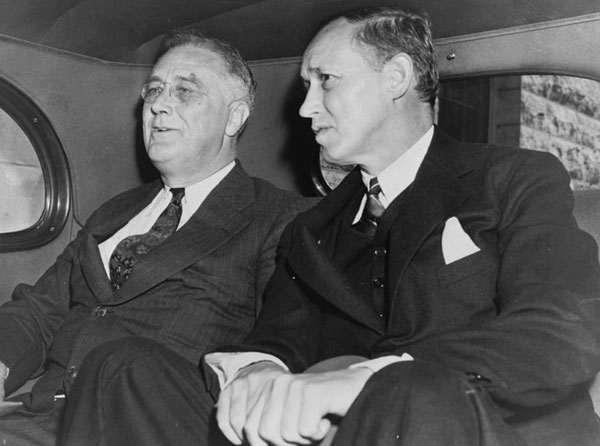
But the greatest traitor of all was never brought to account. New evidence shows that Harry Hopkins, the closest and most influential adviser to President Franklin D. Roosevelt during World War II, was a Soviet agent. Author Christopher Andrew has revealed this new information in a book written in 1990, based on evidence provided by Oleg Gordievsky, a high-level KGB officer who had also been smuggled out of the Soviet Union by British intelligence. Gordievsky reported that Iskhak Akhmerov, the KGB officer who controlled many illegal Soviet agents in the U.S. during the war, had said that Hopkins was “the most important of all Soviet wartime agents in the United States.”[iii]
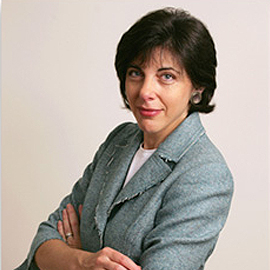
Most of this phase is described in Diana West’s revealing book, American Betrayal: The Secret Assault on Our Nation’s Character,[iv] one of the truly important studies of the 21st century. Although West writes from the American perspective, what she uncovers applies to the West generally, particularly the English-speaking nations.
West concludes that the massive campaign of Soviet propaganda, infiltration and disinformation resulted in what she calls “the capture of the American mind” and, by extension, the rest of the Western world.
In a massive research effort, Diana West has uncovered many hitherto unknown facts about the Soviet infiltration. She writes:
… [W]e were for all intents and purposes occupied by a small army. Expert estimates now peg the number of Americans assisting Soviet intelligence agencies during the 1930s and 1940s as exceeding five hundred… many operating at the very highest level of federal government… This was a national security fiasco that has never, ever entered national comprehension….
… The highest, most powerful official to make common cause with the NKVD [forerunner to the KGB] … was Harry Hopkins. He was also Roosevelt’s most intimate and ubiquitous adviser…. A body of evidence has accumulated over the decades indicating that Hopkins was at least an asset, at least an ally, and quite possibly an agent of the Kremlin….[v]
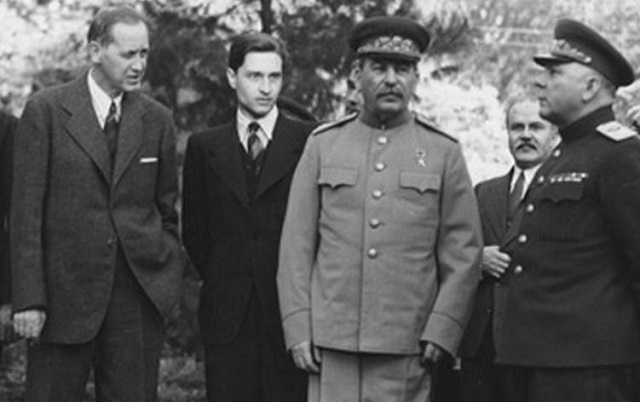
West reveals that the Soviet influence was so great that even academics and journalists were subverted.
… In this impaired mindset I think we see the ultimate impact of Communist influence, Communist conspiracy. The complete subversion of logic is what it did to us. In this sundering of fact from implication lies the end of Enlightenment thinking, the seedbed of cultural decline, the rise of the godless but nonetheless cultishly religious Left, and the disintegration of a faltering, also damaged Right. Into this same breach between fact and implication, between implication and judgement, has rushed anti-logical, contra-factual “political correctness” and also amoral cultural relativism.[vi]
In their book, Venona: Decoding Soviet Espionage in America, historians John Earl Haynes and Harvey Klehr revealed a considerable amount of further independent evidence of Soviet espionage in the United States.
The Venona project, as it became known, was set up in 1943 by Colonel Carter W. Clarke, chief of the U.S. Army’s Special Branch, to examine ciphered Soviet diplomatic cablegrams. Since the beginning of World War II in 1939, the federal government had collected copies of international cables leaving and entering the United States.
The coded Soviet cables, however, proved to be far more difficult to read than Clarke had expected. It was not until 1946 that the first cables were deciphered.
One of the first cables rendered into coherent text was a 1944 message from KGB officers in New York showing that the Soviet Union had infiltrated America’s most secret enterprise, the atomic bomb project.
According to Haynes and Klehr:
By 1948 the accumulating evidence from other decoded Venona cables showed that the Soviets had recruited spies in virtually every major American government agency of military or diplomatic importance. American authorities learned that since 1942 the United States had been the target of a Soviet espionage onslaught involving dozens of professional Soviet intelligence officers and hundreds of Americans, many of whom were members of the American Communist party (CPUSA).
The deciphered Venona messages also showed that a disturbing number of high-ranking U.S. government officials consciously maintained a clandestine relationship with Soviet intelligence agencies and had passed extraordinarily sensitive information to the Soviet Union that had seriously damaged American interests.[vii]
The American Communist underground, conclude Haynes and Klehr, “cooperated with Soviet intelligence in espionage against the United States,” while the CPUSA as a whole “was indeed fifth column working inside and against the United States in the Cold War.”[viii]
Haynes and Klehr, in one of their pioneering studies on the subject, provide an “annotated list of 349 names,” which includes “U.S. citizens, non-citizen immigrants and permanent residents of the United States who had a covert relationship with Soviet intelligence that is confirmed in the Venona traffic.” They add: “Of these 349 persons, 171 are identified by true names and 178 are known only by a cover name found in the Venona cables.”[ix]
Many of these agents worked in sensitive positions in the U.S. government.
As time moved on, the U.S. government lost interest in tracking down these traitors. It is possible that they continued to affect public policy for the rest of their working lives and may have helped set up some of the Marxist groups still in operation today.
The Soviet historian and author of The Great Terror: Stalin’s Purge of the Thirties,[x] Robert Conquest, would much later identify the very first successful implementation of the “Big Lie” – the concerted assault on truth to form world opinion, in this original case, to deny the Kremlin-engineered famine in Ukraine during 1932-33. In West’s words, it was “a Faustian turning point.”[xi]
Conquest describes this concerted effort to deceive the world about the truth of the state-engineered famine, Stalin’s brutal war on the peasantry, as “the first major instance of the exercise of this technique of influencing world opinion.”[xii]
Diana West adds:
This instance, then, was a seminal moment in the history of the Western world. The seminal moment, perhaps, of the twentieth century, a moment in which history itself, always subject to lies and colorations, became susceptible to something truly new under the sun: totalitarianism, or, more specifically, the totalitarian innovation of disinformation, later expanded, bureaucratized and, in effect, weaponized by KGB-directed armies of dezinformatsiya agents.[xiii]
From the 1930s until the fall of the Berlin Wall in 1989, the Soviets were engaged in political warfare against the West. There are varying estimates of the number of people and resources used by the Soviets in their campaign of spying, subversion, disinformation and agitprop (agitation and propaganda), but there is no doubt the Soviets engaged in political warfare on an industrial scale.[xiv]
Suzanne Labin, a French expert on communism, estimated in 1967 that the Soviets were spending about US$2 billion annually and were supporting at least half a million people outside the USSR as agents, fellow-travelers or active sympathizers.[xv]
The CIA in 1980 put their estimate at more than $3 billion (about $7.5 billion in 2016 dollars), stating this was probably a conservative figure.[xvi]
On September 11, 1970, Pravda said that 1.1 million people were engaged in propaganda inside the Soviet Union, whereas The Economist estimated there were 9 million agitprop operatives working within the USSR.[xvii]
Diana West writes:
What do I mean by “armies”? Ion Mihai Pacepa, former chief of intelligence in Communist Romania, told me, “During the Cold War, more people in the Soviet bloc worked for the dezinformatsiya machine than for the Soviet army and defense industry put together. The bloc’s intelligence community alone had over one million officers (the KGB had over 700,000) and several million informants around the world. All were involved in deceiving the West – and their own country – or in supporting the effort.”[xviii]
In his 1981 book, James Tyson used various sources to estimate the number of communist agents, fellow-travelers and sympathizers actively supporting communist propaganda efforts in the United States. Tyson came up with a high figure of 40,000 and a low figure of 4,000. Even the low figure indicates a massive agitprop effort carried out within the United States.[xix]
U.S. Communist Party member Herbert Philbrick became disillusioned with communism and offered to work undercover for the FBI in the late 1940s. He estimated that in the late 1940s there were more than 2,000 members of communist “pro-cells” in the United States. Pro-cell members were American professionals – doctors, lawyers, journalists, and other opinion leaders – organized into ultra-secret cells. These were the vanguard who were assigned special tasks of long-term propaganda and espionage.
Communist front groups
Many of the operations were carried out by front groups set up by the Soviets, including the World Peace Council, the World Federation of Trade Unions, the International Union of Students, the International Organization of Journalists, the Christian Peace Conference and the International Association of Democratic Lawyers.[xx]
According to principles developed by Lenin and his associates, front groups are among the finest vehicles for communist propaganda. The principle of front groups is to employ one or another attraction to induce non-communists to cooperate with communists or to otherwise serve communist objectives. The fronts are useful because they can propagate the communist line, yet give the impression that the propaganda is coming from non-communist sources.
Francis Watson, an expert on subversion and terrorism with the Rockford Institute, an American conservative think-tank, quoted in a 1977 article a figure of no fewer than 2,400 Soviet front groups and Soviet-inspired radical pressure groups. Watson said that not all can be identified as communist fronts, but many consistently follow a line favorable to communist principles.[xxi]
The front groups can be classified under five headings: legal organizations, foundations, think tanks, citizen committees and “innocents’ clubs.”
The following is just a small sample of some of the more high-profile front groups:
The National Lawyers Guild
In 1980 the Guild had several thousand members, offices in 50 American cities, units in most leading U.S. law schools, and a major operation in Washington, DC. When the Guild testified before Congress, its views were accepted as those of strong civil libertarians; but the Guild was cited several times by the Senate Internal Security Committee as a communist front.[xxii]
The National Emergency Civil Liberties Committee
The National Emergency Civil Liberties Committee, founded in 1951 by National Lawyers Guild members, was cited as a communist front by the House Un-American Activities Committee (HUAC) in 1958 for repeatedly defending communists in legal proceeding and disseminating communist propaganda.[xxiii]
The Institute for Policy Studies
One of the most important front groups was, and still is, the Institute for Policy Studies (IPS). Founded in Washington in 1963, by 1981 it had a budget of more than $1 million. It is unknown how much Soviet money was involved, but it was founded, in part, with seed money from the Samuel Rubin Foundation and the Stern Fund. Samuel Rubin, who established the foundation that bore his name, was a dedicated socialist and a Communist Party of USA member.[xxiv]
The IPS board of trustees selected Richard J. Barnet (a State Department lawyer) and Marcus Raskin (an assistant to McGeorge Bundy, President John F. Kennedy’s National Security Adviser) as inaugural co-directors.[xxv]
An FBI “Memorandum,” dated May 4, 1970, classifies Richard Barnet as a “communist.” The FBI Memo says that the IPS “think factory helped train extremists who incite violence in U.S. cities, and whose educational research serves as a cover for intrigue and political agitation… Barnet is a close associate of Markus G. Raskin and Arthur I. Waskow.”[xxvi]
The IPS has spawned numerous offshoots, including:
The National Priorities Project (NPP)
The Government Accountability Project (GAP)
The Bay Area Institute (BAI)
The Transnational Institute (TNI)
The IPS still exists today, although it may no longer answer to the Soviet Union. Marcus Raskin still sits on the board of trustees. The IPS is now funded in part by the Hungarian-American business magnate and billionaire George Soros and the Ford Foundation. It is essentially the same organization, with the same objectives, but different masters. Read more about this subversive and culturally destructive organization in Chapter 5.
The West’s democratic organizations, systems and culture stood little chance against such an onslaught.
The clear intentions of the Soviet Union
The Soviet Union, right up to the eve of its collapse, was committed to the concept of an unappeasable conflict with the Western world and to the doctrine that this could only be resolved by world revolution, as was spelled out by Foreign Minister Andrei Gromyko in his 1975 book, The Foreign Policy of the Soviet Union:
The Communist Party of the Soviet Union subordinates all its theoretical and practical activity in the sphere of foreign relations to the task of strengthening the positions of socialism, and the interests of further developing and deepening the world revolutionary process.[xxvii]
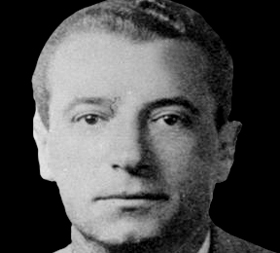
On April 4, 1943, Victor Kravchenko, a Communist Party apparatchik and an economic attaché at the Soviet headquarters in Washington, sensationally defected to the West, where he tried to warn the West in two significant books on the totalitarian horrors of life in the USSR. He was horrified to find that Soviet propaganda and disinformation were so powerful that little notice was taken of his extraordinary disclosures.
Kravchenko wrote: “Stalin’s grip on the American mind, I realized, was almost as firm as his grip on the Russian mind.”[xxviii]
Yuri Bezmenov was a highly trained linguist who had never lived in a world with neutral facts or a world that functioned without lies, big and small. As a KGB-trained “journalist” with Novosti, a joint creation of the Communist Central Committee’s agitprop department at the KGB Bezmenov was himself quite skilled at creating lies – “changing perception,” as he put it.
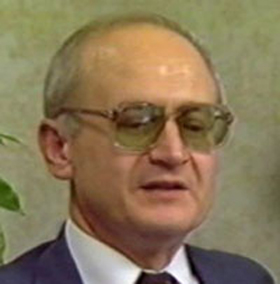
In an extraordinarily revealing 1984 interview with G. Edward Griffin, Bezmenov disclosed the Soviet methods of mind control, subversion and disinformation.
As well as writing propaganda pieces for Novosti, Bezmenov was tasked with recruiting high-level, influential people. The best targets, he said, are those who were motivated by power, greed and ego.
The KGB had a brutal plan for “useful idiots,” the leftists, intellectuals and idealists who helped spread communism. According to Bezmenov, the KGB’s view was that when their work is done, line them up and shoot them, the reasoning being that if any of these people were to become disillusioned with communism, they would become bitter and dangerous enemies.
Bezmenov was assigned to a post in India to assist with KGB operations in that country. He admired the Indian culture and became friendly with some of the “useful idiots” he had helped recruit.
One day, to his horror, he saw the list of people to be executed “when their work was done.” It included people he had befriended.
“I was mentally and physically sick,” Bezmenov told the interviewer. “I realized that we were a bunch of thugs and murderers.”
It was at this point he decided to defect to the United States.
In 1970 he made his way to Athens, where he was debriefed by the CIA for six months, after which he was given a new identity. Now known as Tomas Schuman, he was secretly relocated to the country of his choice, Canada.
It is puzzling and disturbing that information on the massive propaganda war, orchestrated by the Soviet Union and recorded by the CIA over a six-month period, was not acted upon by the authorities of the day.
Later, Bezmenov would set out his remarkable thoughts on the U.S. government’s lack of response to his disclosures:
Observing the world-wide destruction of human minds caused by my motherland, un-resisted and unpunished, and meditating about how easily all that mind-warping could be stopped, I wanted to believe that there, in the West, some people and organizations we call “reactionary circles” know the situation and how to deal with our subversion. But when needed, I thought, they would stop us for their own good.
“But,” as Bezmenov would conclude, “no one wanted either my information or to open their eyes.”[xxix]
He went on to disclose, in the 1984 interview, the Soviet’s four-stage plan for the communist takeover of a country through demoralization, destabilization, crisis and normalization.
He expanded on the first stage, demoralization of a nation, as a 15- to 20-year process during which students were indoctrinated in Soviet ideology without balancing American ideals of patriotism and democracy.
People who graduated in the 1960s from American universities, declared Bezmenov, are now in positions of power:
You are stuck with them. You cannot get rid of them. They are contaminated. They are programmed to think and react to certain stimuli in a certain pattern. You cannot change their mind even if you expose them to authentic information.
In other words, [with] these people, the process of demoralization is complete and irreversible[xxx]
The subversion, deception, disinformation, provocation and influence, resulting in what was characterized by Kravchenko, Bezmenov, West and others as “the grip on the American mind,” together with the activities of hundreds of front groups and thousands of agents, fellow-travellers, traitors and radicals, shook the very foundations of Western culture and, indeed, Western civilization, an event from which the West have never recovered. This was psychological warfare on an industrial scale.
Bezmenov warned in the starkest terms:
The U.S. is in a state of war – a total undeclared war against the foundations and principles of their system. The enemy is the world communist system.[xxxi]
Unfortunately, the ruling classes of the day, with a few notable exceptions, had no idea they were even at war.
Sadly, the same is true today. The ruling classes nowadays still have no idea that the Islamists are waging a Soviet-style war of propaganda and infiltration against the West. This time the situation is even more dire, as the Islamists are supported by the huge number of radicals and leftists spawned by the Soviet assault. It may seem strange that two groups with diametrically opposed policies on such matters as homosexuality, promiscuity and the treatment of women can be in league. What binds them together is the common aim of overthrowing capitalism and our system of liberal democracy.
Bezmenov was not to know that in a few short years, following his 1984 interview, the Soviet Union would collapse. However, so massive was the Soviet assault that it created a life of its own. Thousands of radicals and leftist groups, no longer answerable to the Soviet Union, yet still inspired by the principles of communism and socialism, have continued the undermining of Western culture. Their methods became known as cultural Marxism, or more correctly, Gramscianism – the achievement of the original communist aims by the breakdown of Western culture rather than through direct action.
This set the stage for the next phase of the assault on the West, the “Long March through the institutions” in the post-war era.
Chapter 5: The Dawn of a New Dark Age
[i] John Earl Haynes and Harvey Klehr, Early Cold War Spies: The Espionage Trials that Shaped American Politics (New York: Cambridge University Press, 2006), p. 10.
[ii] Herbert Romerstein and Eric Breindel, The Venona Secrets: Exposing Soviet Espionage and America’s Traitors (Washington, DC: Regnery, 2001), p. 75.
[iii] Christopher Andrew and Oleg Gordievsky, KGB: The Inside Story of its Foreign Operations from Lenin to Gorbachev (London: Hodder & Stoughton, 1990), p. 233.
See particularly: M. Stanton Evans and Herbert Romerstein, Stalin’s Secret Agents: The Subversion of Roosevelt’s Government (New York: Threshold Editions, 2013), pp. 113-122, 127-133.
[iv] Diana West, American Betrayal: The Secret Assault on Our Nation’s Character (New York: St Martin’s Press, 2013).
[v] Ibid., pp. 68, 129.
[vi] Ibid., p. 81.
[vii] John Earl Haynes and Harvey Klehr, Venona: Decoding Soviet Espionage in America (New Haven, Connecticut: Yale University Press, 1999), p. 18.
[viii] Ibid., pp. 4, 7.
[ix] Ibid., p. 339.
[x] Robert Conquest, The Great Terror: Stalin’s Purge of the Thirties (London: Macmillan, 1st edition, 1968).
Robert Conquest, The Great Terror: A Reassessment (New York: Oxford University Press, revised and updated edition, 1990).
[xi] West, American Betrayal, op. cit., p. 100.
[xii] Robert Conquest, Harvest of Sorrow: Soviet Collectivization and the Terror-Famine (New York: Oxford University Press, 1986), p. 308.
[xiii] West, American Betrayal, op. cit., pp. 100-101.
[xiv] Richard H. Schulz and Roy Godson, Dezinformatsia: Active Measures in Soviet Strategy (Washington, DC: Pergamon-Brassey’s International Defense Publishers, 1984).
Ladislav Bittman, The KGB and Soviet Disinformation: An Insider’s View (Washington, DC: Pergamon-Brassey’s International Defense Publishers, 1985).
[xv] James L. Tyson, Target America: The Influence of Communist Propaganda on U.S. Media (Chicago: Regnery Gateway, 1981), p. 10.
[xvi] Soviet Covert Action and Propaganda, presented to the House of Representatives Committee on Intelligence, by the Deputy Director for Operations, CIA, February 1980.
[xvii] The Economist (UK), March 11, 1977.
[xviii] West, American Betrayal, op. cit., p. 101.
[xix] Tyson, Target America, op. cit., p. 10.
[xx] Herbert Philbrick, I Led Three Lives: Citizen, ‘Communist’, Counterspy, (New York, McGraw-Hill, 1952) p. 10.
Philip J. Altbach, “Youth meets in Moscow”, Problems of Communism (U.S. Information Agency, Washington, DC), Vol. 3, No. 11, November 1964, pp. 64-67.
URL: www.unz.org/Pub/ProblemsCommunism-1964nov-00064
Vladimir Bukovsky, “The peace movement and the Soviet Union”, Commentary (New York), Vol. 73, May 1982, pp. 25-41.
J.A. Emerson Vermaat, “Moscow fronts and the European peace movement”, Problems of Communism, Vol. 31, No. 6, November-December 1982, pp. 43-56.
URL: www.unz.org/Pub/ProblemsCommunism-1982nov-00043?View=PDF
Wallace Spaulding, “Communist fronts in 1984”, Problems of Communism, Vol. 34, No. 2, March-April 1985, pp. 102-105.
URL: www.unz.org/Pub/ProblemsCommunism-1985mar-00102
[xxi] Francis M. Watson, The Movement: Role of U.S. Activists; Threats to Free Society, Conflict Studies no. 80 (London: Institute for the Study of Conflict, February 1977).
[xxii] Tyson, Target America, op. cit., p. 35.
[xxiii] Ibid., p. 37.
[xxiv] “Institute for Policy Studies (IPS)”, DiscoverTheNetworks.org (David Horowitz Freedom Center, Los Angeles), a guide to the political left.
URL: www.discoverthenetworks.org/groupProfile.asp?grpid=6991
[xxv] Tyson, Target America, op. cit., p. 44.
[xxvi] Emerson Vermaat, “Obama’s preferred future spy chief Leon Panetta supported communist-linked anti-CIA think tank”, Militant Islam Monitor, January 9, 2009.
URL: www.militantislammonitor.org/article/id/3807
[xxvii] Quoted in West, American Betrayal, op. cit., p. 108.
[xxviii] Victor Kravchenko, I Chose Freedom: The Personal and Political Life of a Soviet Official (New York: Charles Scribner’s Sons, 1946), p. 304.
[xxix] Tomas Schuman (aka Yuri Bezmenov), World Thought Police (Los Angeles: NATA Almanac, 1986), p. 2.
[xxx] Yuri Bezmenov interviewed by G. Edward Griffin on television in 1984 and quoted in: James Burke, “Former KGB agent explains communist ideological subversion in America”, Vision Times (New York), August 30, 2015.
URL: www.visiontimes.com/2015/08/30/former-kgb-agent-explains-communist-ideological-subversion-in-america.html
[xxxi] Tomas Schuman (aka Yuri Bezmenov), World Thought Police, op. cit.